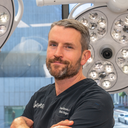Posted underGynecomastia Surgery q&a
One year after my gynecomastia surgery - is this crater deformity? (photos)
Now it's been one year after my gynaecomastia surgery. When I raised my hands craters occurs on both sides of the chest. Also left side nipple indent towards the body. I feel some hardness under that nipple. What is this issue and can it be corrected?
Answers (5)
From board-certified doctors and trusted medical professionals
Dr. Daniel Barrett, MD

Dr. Daniel Barrett, MD
Board Certified Plastic Surgeon
Answer
Dr. Anmol Chugh, MBBS, MS, MCh
Dr. Anmol Chugh, MBBS, MS, MCh
Plastic Surgeon
Answer
Dr. Mats Hagstrom, MD (license on probation)
Dr. Mats Hagstrom, MD (license on probation)
Board Certified Plastic Surgeon
Answer
More Gynecomastia Surgery Questions
See all Gynecomastia Surgery Q&AWE SEND PRETTY
EMAILS
What’s trending? Who’s turning heads? Which TikTok myths need busting? We’ve got you. No fluff, no gatekeeping—just real talk. Get our free, unfiltered newsletter.
